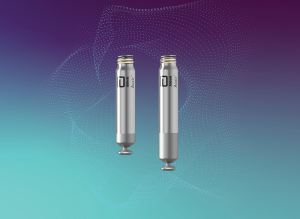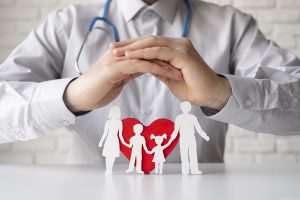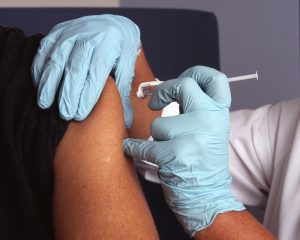Lymphomas are a group of cancers that originate in the lymphatic system, which includes the various lymph glands scattered throughout the body.
These cancers arise when abnormal white blood cells begin to proliferate uncontrollably.
Lymphomas are the sixth most prevalent form of cancer globally, excluding non-melanoma skin cancers.
There are two primary types of lymphoma, each with distinct patterns of spread and treatment approaches:
- 1. Non-Hodgkin Lymphoma (NHL): This type accounts for approximately 90% of all lymphoma cases.
- 2. Hodgkin Lymphoma (HL): Characterized by its unique appearance in biopsy samples, Hodgkin lymphoma represents the remaining 10% of lymphoma cases.
Lymphoma signs and symptoms
- Unexplained fever.
- Swelling of one or more lymph glands such as in the neck or armpits.
- Swollen abdomen.
- Abnormal sweating, especially at night.
- Tiredness.
- Loss of appetite.
- Bruising or bleeding easily.
- Weight loss.
- Frequent infections.
- Cough, chest pain or problems breathing.
- Rash or itching.
Treatments for Lymphoma
Chemotherapy is usually the first treatment doctors try to treat lymphoma, including the two most common forms: non-Hodgkin and Hodgkin.
But alternatives to chemotherapy are developing, as first-line treatments and as backup options according to Mayo Clinic.
There were roughly a half-million new cases of non-Hodgkin lymphoma and 82,409 new cases of Hodgkin lymphoma in 2022, making them the 10th and 26th most commonly diagnosed cancers that year, respectively, according to the most recent statistics from the World Health Organization’s International Agency for Research on Cancer.
People with lymphoma may receive chemotherapy alone or a combination of chemotherapy and nonchemotherapy treatments.
Nonchemotherapy options include immunotherapy, chimeric antigen receptor-T cell therapy (CAR-T cell therapy), targeted therapy, bone marrow transplant and radiation therapy.
Ayesha Rashid, Chief Editor of Mediworldme recently interviewed Dr. Stephen Ansell, M.D., Ph.D., a distinguished hematologist and oncologist at Mayo Clinic in Rochester, Minnesota, who also serves as the chair of the hematology division.
Dr. Ansell’s insights shed light on the latest advancements and provide new hope for those affected by this complex and challenging cancer.
1. Can you explain the differences between Hodgkin and non-Hodgkin lymphoma in terms of prevalence and symptoms?
Hodgkin lymphoma is relatively rare while non-Hodgkin lymphoma is more common. Hodgkin lymphoma has rare cancer cells in the middle of many immune cells while non-Hodgkin lymphoma typically has many cancer cells. Both types of lymphoma present with enlarged lymph nodes and constitutional symptoms but Hodgkin lymphoma can sometimes present with itching.
2. What are the primary challenges in treating lymphoma that current chemotherapy treatments face?
Chemotherapy typically causes low blood counts, hair loss and severe fatigue. However, the treatments usually result in substantial improvement in the disease and sometimes in cure. The challenge is to increase the cures while decreasing toxicity.
3. How do nonchemotherapy treatments like immunotherapy and CAR-T cell therapy specifically target cancer cells while minimizing damage to healthy cells?
Immunotherapy and CAR-T cell treatment identify proteins that are uniquely on the cancer cells, and therefore, the effects are relatively specific to the lymphoma cells.
4. Could you describe the process and benefits of CAR-T cell therapy for lymphoma patients?
The patient’s own T-cells are engineered to specifically target the cancer cell. This requires removal of the T-cells, insertion of a chimeric receptor, and administration after lympho-depleting chemotherapy. The treatment results in high response rates that are durable for approximately a third of patients.
5. What are the latest advancements in targeted therapy for lymphoma, and how do these treatments work?
Targeted therapies specifically interfere with key signaling pathways that are necessary to help the cell survive.
6. How does the Mayo Clinic’s Early Cancer Therapeutics Group contribute to the development of new treatments for lymphoma?
New treatments need to be tested to prove that they are safe and effective. This is the role of the Mayo Clinic’s Early Cancer Therapeutics group.
7. Can you discuss the potential long-term complications of lymphoma treatments and how your research aims to minimize these issues?
Long-term side effects are typically on the bone marrow and other organs such as the heart. The research attempts to decrease the treatment to the least necessary to still get a good result and to identify targeted therapy that is spare healthy tissue.
8. How important is it for lymphoma patients to maintain a healthy diet and exercise routine during their treatment?
The patient’s ability to tolerate treatment is directly proportional to the likelihood of benefit. Maintaining a healthy lifestyle through exercise and diet will help.
9. Looking ahead, what do you see as the most promising areas of research and development in the treatment of lymphoma?
Further improving immunotherapy is likely to improve the patient’s outcome.









